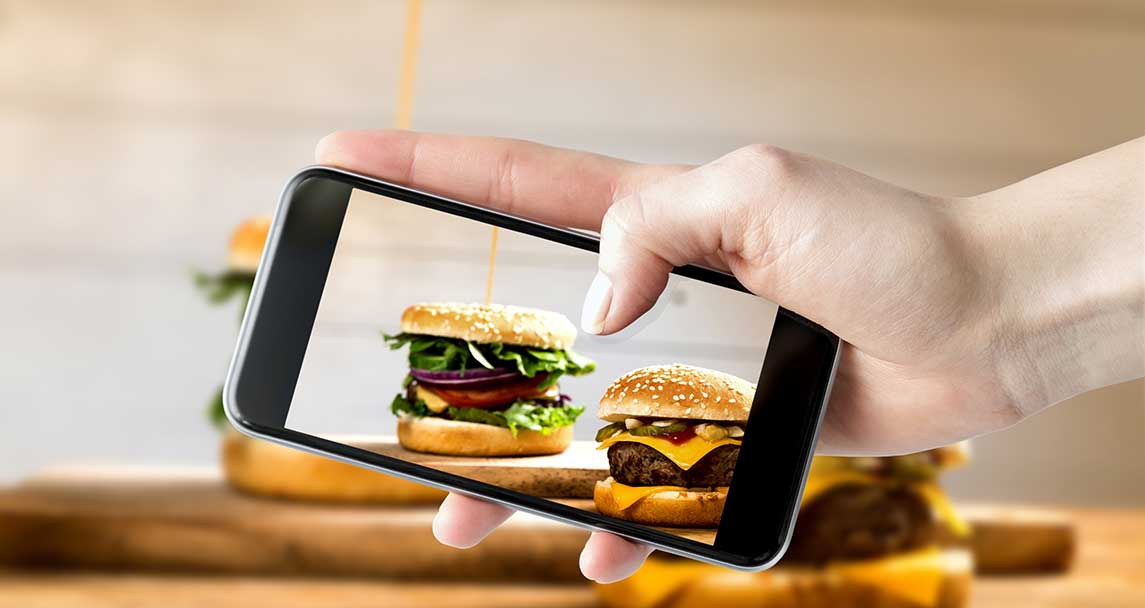Why QSR’s need to serve up Engaging Social Content

Australian consumers are amongst some of the most active individuals on social media accounts today, accessing news, entertainment and interacting with others through various platforms.
Social media channels have also significantly changed the way consumers interact with brands leaving companies constantly looking for new ways to utilise the platforms to engage their audiences.
In fact, in terms of brand-to-consumer social media interactions, over 1 billion restaurant visits are thought to be influenced by online marketing services, particularly social media marketing efforts. Whether brands are interacting with consumers themselves through social media platforms or as a result of individuals posting their own brand-relative content to their feeds, there is much evidence to suggest that social media ultimately impacts a consumers shopping decisions. Therefore, it is imperative that QSR’s (Quick Service Restaurants) and food brands serve up an appealing social feed to engage and interact with their target audiences.
From online ordering through to immediate resolutions, social media has fundamentally altered the QSR industry. Undoubtedly, one of the major benefits of social media marketing is the unprecedented opportunity to engage with an audience instantaneously, fostering a personalised relationship which in turn improves customer retention. In fact, some studies suggest that QSR brands that effectively engage their consumers through social platforms experience a 92% customer retention rate through building loyalty and personal connections. Furthermore, another recently published study reaffirmed that brand engagement was significantly improved for brands when their target audiences were active on social media. This can be identified with Starbucks, who have a loyal audience who happen to be active of on social media. In 2015, the brand launched a ‘meet me at Starbucks’ global campaign which received 91 million impressions and significantly boosted engagement by encouraging their customers to get involved.
However, engaging consumers through social platforms is easier said than done. In 2013, McDonald’s was ranked as one the top ten brands on social media with over 29 million fans yet even they struggle to engage the majority of their audience, with an engagement rate of 0.5%. Therefore, it is essential to understand how consumers interact with different platforms in order to understand the best methods to improve this rate. For example, Instagram has been identified as the top social media platform for consumer engagement with restaurant brands, with 75% of Instagram users visiting a brands website after seeing an advertisement or post. This has been attributed to the highly visual nature of the platform, helping to influence purchasing decisions.
Customers also interact with brands via social media in hopes to rectify any complaints that they may have. In fact, 78% of consumers who use platforms such as Twitter to express frustration with a brand, expect a response within an hour. The way brands handle such situations can ultimately have an effect on the way consumers perceive the brand from then on, therefore ensuring that queries are handled promptly and in a personalised way will increase customer satisfaction and leads to improved customer retention. Some studies have even identified that restaurants who respond to their consumers on social media in a timely manner, whether it be a complaint or perhaps or more benevolent message, will actually experience higher levels of engagement with 71% of consumers more likely to recommend the company to their friends. This demonstrates that opportunity social media provides to improve the overall customer experience through a key touch point. In fact, from the consumer’s perspective, there is something uniquely special when a brand personally responds or interacts to your comments online, while failing to receive the help you were after can often leave the consumer disappointed and frustrated.
While social media provides the opportunity to better interact with current audiences, the amount of reach such platforms provides is undeniable. In fact, marketers have always been aware the persuasiveness that word of mouth marketing enables, with social media only amplifying this opportunity.
It has even been identified that 40% of consumers actually discover and learn about restaurants for the first time through digital platforms, with their friends checking in, tagging or uploading their own posts to help spread the word. Furthermore, consumers actually flock to social media for this reason, with 75% of Facebook users admitting they will purposely browse the site to find their next favourite restaurant spot or to decide where they want to eat. QSR brands need to ensure that they have a strong brand presence via social platforms by posting captivating content that consumers are likely to share with their friends, as well as providing a place where new audiences can research the brand and finalise their decision if they have seen a friend make a brand-related post of their own.
Social media marketing also provides the opportunity to gather valuable insights about their consumers, their own brand and competitors, and leverage these insights to continuously help develop engaging marketing content that will increase customer satisfaction and the likelihood of sharing. In fact, social media is the largest unstructured consumer opinion data, proving to be a goldmine for marketers who invest their time and efforts into it.
Consumers are some of the largest content creators, posting more than 22,000 pieces of unique content per second across various social platforms including Facebook, Pinterest, Instagram and Snapchat. These posts often feature products, brands, locations and destinations providing a unique insight into a customer’s lifestyle, revealing their behaviours, opinions and how they interact with a brand. These insights can then be used to identify trends to strengthen the overall social media strategy, identifying types of content that audiences will be more likely to resonate with. Such insights can also help develop a strategy that can give QSR brands the ability to maintain some control of what consumer’s post about their brand in the unpredictable and volatile social media landscape.
In fact, a July 2017 report by the social media intelligence software company, Infegy, revealed McDonald’s did just this, finding out that their active social media consumer was largely female and interested in topics such as humour, dating, beauty and dogs. The brand also determined brand specific topics that their audience resonated with noting that that French Fries and McFlurry’s were the most sought out item. This provides the company with the opportunity to develop more relatable and shareable content while taking control of the conversation around the brand by offering promotions around favoured menu items.
With over 3.5 billion people online using social media every day and over 57% of consumers ordering food online, including via social platforms, QSR brands need to focus on social media as an integrated component of their digital marketing services. Social media provides a great opportunity to improve customer satisfaction, boost engagement, reach new audiences and gather previously unimaginable insights to strengthen their social media strategy which will continually power these processes. QSR brands that are successful on social media are the organisations who interact with customers the most, providing them with relatable and personal content rather than delivering traditional, one-sided marketing messages.
At RGC Digital Marketing, we are a social media ad agency in Sydney offering a range of digital marketing and advertising services that connects consumers to brands. To find out how to improve your social media engagement, please contact Richard on 1300 770 985 or email richard@rgcadvertising.com.au


